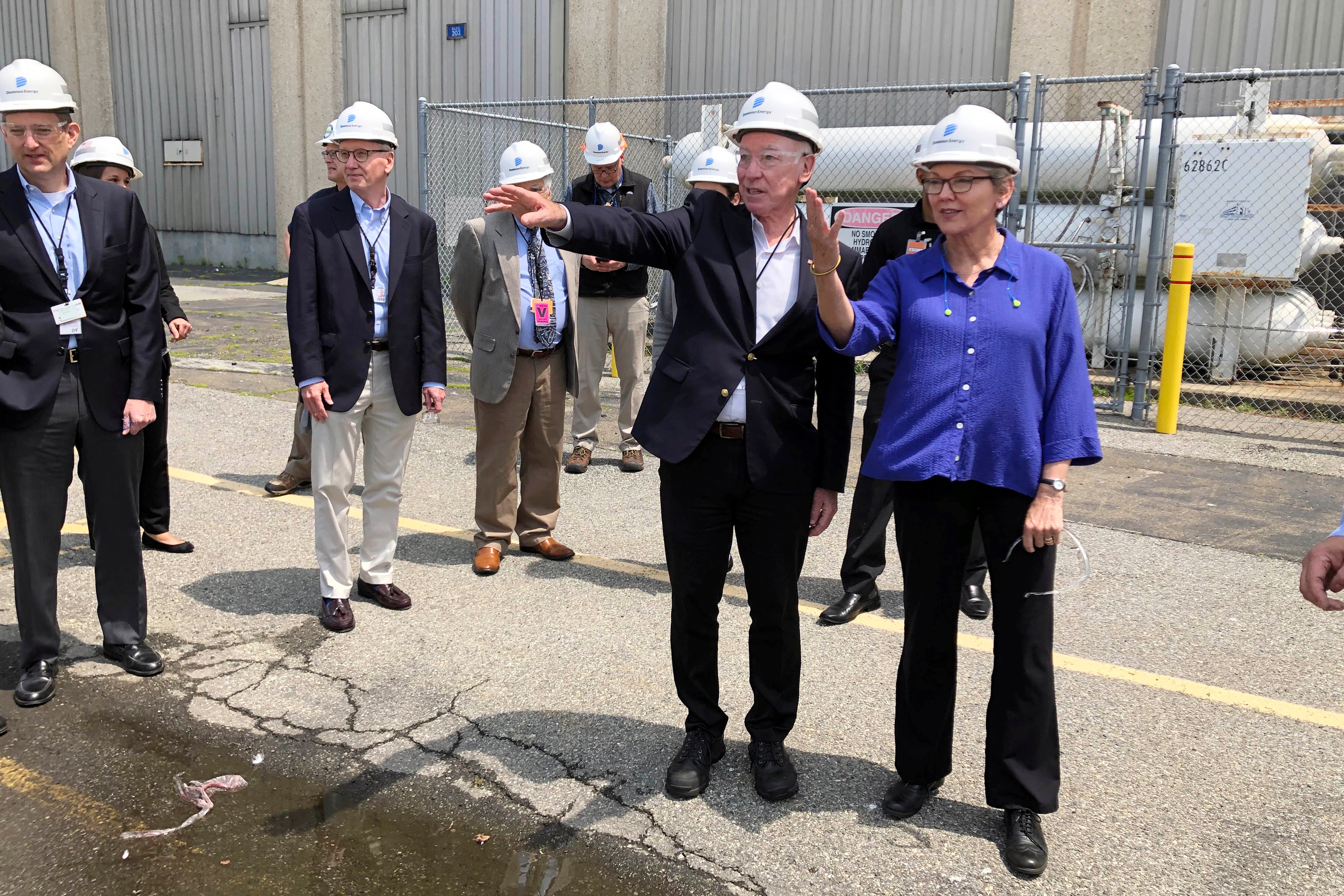Energy secretary visits nuclear plant to discuss waste issue
The U.S. energy secretary is visiting a nuclear power plant in Connecticut at the invitation of the local congressional member as both work to change how spent nuclear fuel is stored nationwide to solve a decadeslong stalemate

Your support helps us to tell the story
From reproductive rights to climate change to Big Tech, The Independent is on the ground when the story is developing. Whether it's investigating the financials of Elon Musk's pro-Trump PAC or producing our latest documentary, 'The A Word', which shines a light on the American women fighting for reproductive rights, we know how important it is to parse out the facts from the messaging.
At such a critical moment in US history, we need reporters on the ground. Your donation allows us to keep sending journalists to speak to both sides of the story.
The Independent is trusted by Americans across the entire political spectrum. And unlike many other quality news outlets, we choose not to lock Americans out of our reporting and analysis with paywalls. We believe quality journalism should be available to everyone, paid for by those who can afford it.
Your support makes all the difference.The U.S. energy secretary visited a nuclear power plant in Connecticut on Friday at the invitation of the local congressional member as they both work to change how spent nuclear fuel is stored nationwide to solve a decadeslong stalemate.
Energy Secretary Jennifer Granholm and Democratic U.S. Rep. Joe Courtney toured the Millstone Nuclear Power Station in Waterford, Connecticut. Spent fuel that was meant to be stored temporarily at current and former nuclear plant sites nationwide is piling up. Some of it dates to the 1980s.
There’s renewed momentum to figure out a storage site, or sites, to free up the land where the waste is currently being stored and move it away from population centers, fault lines and flood plains. The Biden administration and many state officials view nuclear energy as essential to reducing greenhouse gas emissions and staving off the worst effects of a warming planet.
To responsibly use nuclear power, Courtney said, “We have to move on this issue.”
The Energy Department is working to develop a process to ask communities if they’re interested in storing spent nuclear fuel on an interim basis, both to make nuclear power a more sustainable option and figure out what to do with the waste.
Granholm has said it’s the best way to finally solve the issue. A plan to build a national storage facility northwest of Las Vegas at Yucca Mountain has been mothballed because of staunch opposition from most Nevada residents and officials.
There's roughly 89,000 metric tons of used commercial fuel at nearly 80 sites in 35 U.S. states, according to the Nuclear Energy Institute, the industry’s trade association. At 20 of the sites, there's no longer an operating reactor, the institute said.
All of that spent fuel, in storage containers, could theoretically fit into a large distribution warehouse for a big box store, said Rod McCullum, the institute's senior director of decommissioning and used fuel. It could be much more efficiently managed if it was consolidated, he added.
Millstone seals its spent nuclear fuel in massive stainless steel canisters on what used to be a parking lot and keeps it in pools that cool it. There’s room for 135 casks. Fifty-two casks have been installed, of which 47 are full, according to plant owner Dominion Energy.
Courtney's district also includes the site of the former Connecticut Yankee Nuclear Power Plant in Haddam Neck. Connecticut Yankee closed in 1996. Spent fuel is still stored on valuable waterfront real estate.
“The frustration in Waterford and Haddam Neck, it has been off the charts,” Courtney said. “People feel, you know, this was not the deal when these plants were built."
Courtney is part of a bipartisan congressional caucus working to change how spent nuclear fuel is stored. Its members believe the current system is not sustainable, particularly for sites that could be redeveloped. Many are along the coastline, in flood plains — the worst geology for spent fuel to be stranded, Courtney said.
Congress has provided about $40 million to fund the consent-based siting process that would be used to identify sites to store the nation’s spent nuclear fuel, and the administration asked for $53 million more for fiscal 2023, Courtney said.
Edwin Lyman, director of nuclear power safety at the Union of Concerned Scientists, said his main concern is that planning for consolidated interim storage could undermine efforts to figure out a permanent storage repository under ground. If there's a place to ship fuel, there won't be the political momentum to site an underground repository, which is the only plausible, safe, long-term solution for this waste, he said Friday.
Millstone is one of only two commercial nuclear power plants operating in New England. One of its reactors is licensed to generate power until 2035, another is licensed until 2045.